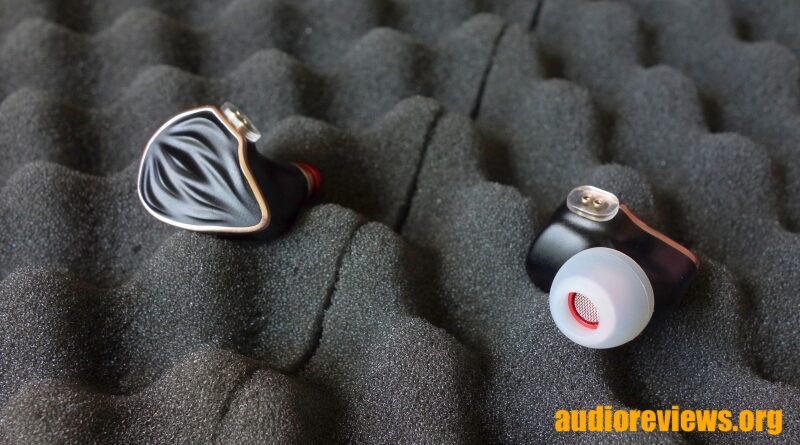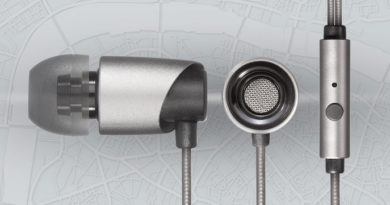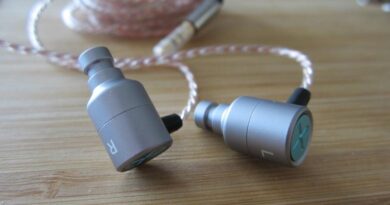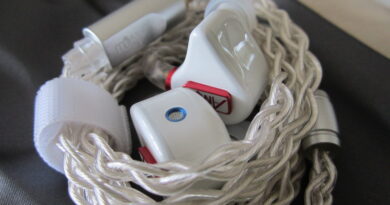HIDIZS MS3 Review (1) – Nine Lives But One Life To Live
INTRO
Warm and inviting with a zing is how I would describe the HIDIZS MS3. Scaled back drivers to design elements from their flagship MS5, the HIDIZS MS3 is a safe gateway to the mid-tier over $100. Inside they have installed a dual Knowles SWFK-3176 balanced armature paired with a 10.2mm dual magnetic circuit dual cavity dynamic driver for boisterous low end. With nine tuning options, the HIDIZS aims to give users a way to find the right sound signature as long as the baseline contains some resemblance of elevated bass and treble.
PACKAGE CONTENTS
As many others, the HIDIZS MS3 have aimed the tuning towards one of the Harman tuning curves in particular the 2019 version, and hit that target well with 2 of their tuning nozzles at an introductory sales price of $119 and retail price of $169. The internals drivers do not share any similarities of the MS5. We have previously reviewed hits such as the HIDIZS S9, AP80 Pro-X, while the MS5 and other IEMS are always a mixed bag of opinions.
HIDIZS seems to have improved a couple of things that bothered me with the HIDIZS MS5, mainly related to the cable ear-hooks and weight. It is still a heavier cable than most with a plastic stiffness, but the ear-hooks are less dramatic easing the pain inflicted on my ears.
The case is not nearly as lavish and has opted for a coin purse like Moondrop did with their LAN, which is great for reducing the bulk in your pocket. Instead HIDIZS focused on the same nice selection of ear-tips and nozzle filters included with the MS5. Missing is the aluminum plate for storing the filters. The filters do include an o-ring to provide some friction from unscrewing, but I still recommend occasionally checking the tightness.
The 3 sets of ear-tips do what they say, vocals tips accentuate the upper mid-range, bass tips knock down some of the treble, and the balanced take a small bite out of the upper treble and sharpness. They are not overly firm- I wish the outer portion would maintain their shape a little better, on the plus the stems are thick to keep them in place while improving bass concentration into the ear canal.
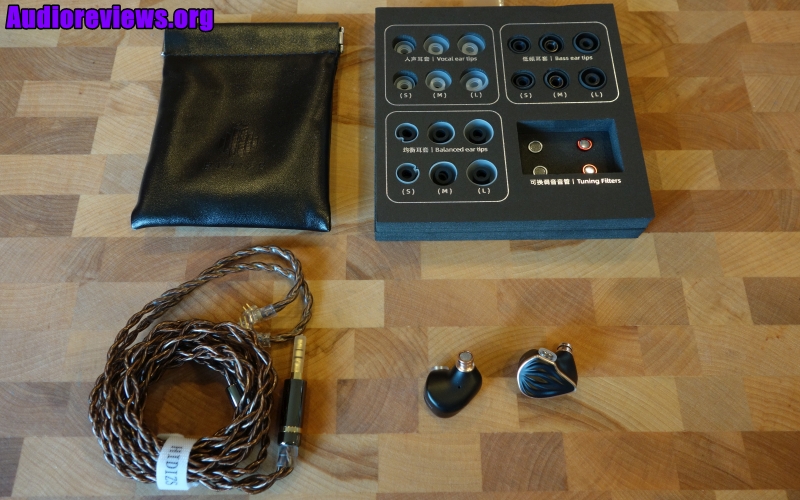
FITMENT / ISOLATION
As I test more IEM’s I am starting to realize the fitment is the number one factor in determining if the HIDIZS MS3 would be considered for a position in my rotation, then and only then does sound factor in. If I am constantly repositioning or they hurt in some way, this will determine usage. Unfortunately my fitment does not equal your fitment. It is smaller than the MS5 mainly in outward protrusion, nozzle length is good, they do wiggle a bit, but I would classify as medium sized. Isolation is stronger than average given the aluminum shell and decent coverage of filling the space.
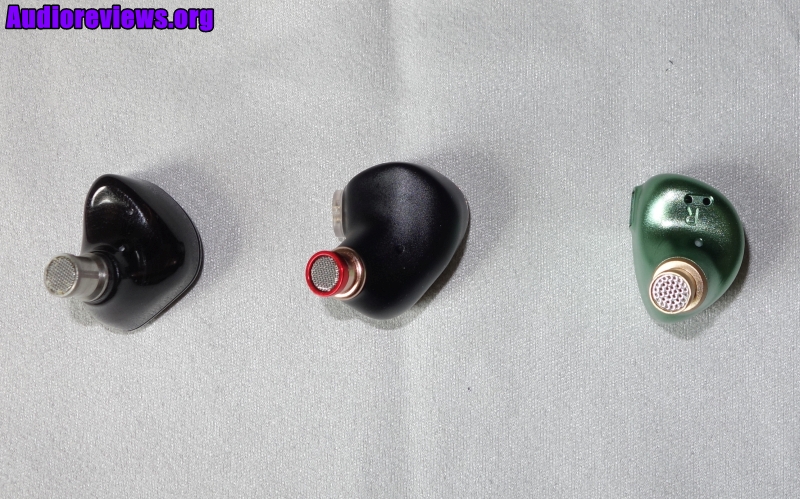
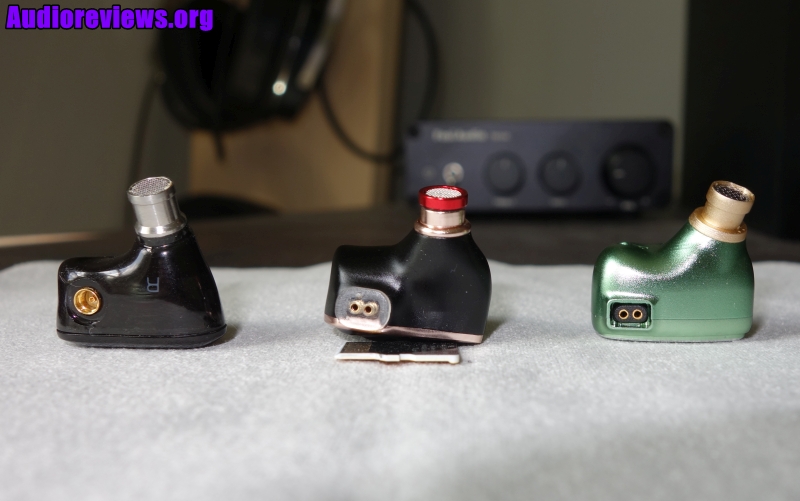
SOUND
Pairing the HIDIZS MS3 with their AP80 Pro-X they are heavy in the bottom, easy on the top except for a thin peak in the treble knob region they feel grounded otherwise. I would characterize it as a V tuning. Nuances in the bass overpower much of the mid-range and treble, they are not bass-head, but are bass heavy if that makes sense.
Drums and bass guitars are meaty as opposed to thinner presentations from Moondrop offerings. This is pretty standard affair HIDIZS bass. It could probably use a few clicks of less bass between 250-400Hz to remove some coloration, but it might also suck some life out. Impact is forceful, with good rumble to add dimension. The dual magnetic circuit appears to offer good control.
Upper mid-range and treble are mostly impacted by the filters which tilts the balance between powerful bass and amount of treble energy. Treble is clean and well detailed given the dual Knowles balanced armature.
I gravitated towards the combination of the red filters with the balanced ear-tips. Resolving the macro dynamics, the HIDIZS MS3 also manages to deliver some micro details as needed. Because of the placement of the BA right at the exit, clarity in the treble is pronounced.
The red filters transform the HIDIZS MS3 to something different like a cousin of the other tunings, while the silver and gold filters are siblings. With the red filters you have a gentle ramp up into the lower treble peaking in the presence region. This keeps the vocals from sounding too forward. I prefer the red filter with the balanced tips.
Treble is clean and articulated well by the Knowles BA, it does have a touch of extra zing at 8-10Khz that causes cymbals to pull forward in the mix. It’s not sibilant but rather accentuates some brilliance. I chose the balanced tips to knock down the upper treble to offset this.
Staging feels tight with everything clustered-orchestra pieces feel small but even and well integrated. They are more sensitive than the Ibasso IT01 and the TinHifi T4, with the Ibasso having a darker tone and less biting bass.
The TinHifi T4 is similar to the overall signature of the HIDIZS MS3, but removes some of the coloration from the bass. Upper mid-range pinna gain is knocked down a bit in comparison to the HIDIZS MS3. The TinHifi T4 sounds tilts in the direction of V/balanced.
Comparing to another equal contender the BQEYZ Spring 2, the HIDIZS MS3 has bigger bass with more bloom and room reverberation enhancement. Not surprising the Spring series bass was like drinking a lite beer in that it tastes like beer, but lacking in flavor and refinement.
The treble on the HIDIZS MS3 brings more sizzle and definition while mid-range feels on par to the BQEYZ Spring 2. Fitment of the MS3 is larger over the Spring 2 and the cable is heavier as well with my cable preference going towards the Spring 2. Bigger is not always better.
While the HIDIZS MS3 is easily driven from the AP80 Pro-X along with a dongle or smart phone, the SMSL SU-9 with the JDS Labs amp tightens up the bass even further with more umph and control. Timbre is not as organic as single dynamic Moondrop Kato, but I do find the clarity higher most likely the result of the peaking treble.
WRAPPING UP
I think it would be wrong to primarily focus on the Harman tuning of the HIDIZS MS3 when it has another side to it. The point is the MS3 is a properly accessorized worthy mid-tier IEM. I would rather recommend someone save for these than buy a pile of $50 or under IEMs hoping to make medicore sound gains.
With the unique shell faceplate, and nice selection of ear-tips and filters offering 9 tunings (only 2 major and 7 minor), I can stand behind the recommendation of the MS3 in the price range of $100-200 with the caveat the heavy cable is too much burden on your ears and it does have a V tuning with a wee bit too much in and around 8Khz. If this does not worry you, give them a look.
Disclaimer: I cannot go on vacation without incident- hot tip, ocean waves can be stronger than knees. HIDIZS provided these free to sweep me off my feet but I own my own opinions and my actions when playing in the ocean.
SPECIFICATIONS
HIDIZS MS3 Manufacturers Product Page
Type: 1DD+2BA Hybrid 3 Drivers In-Ear Monitor
Frequency Response: 20Hz-40Khz
Hi-Res Certification
Dynamic Driver: 10.2mm dual magnetic circuit, dual cavity PEEK+PU
Balanced Armature: Knowles SWFK-31736
Replaced Sound Filters: 3 types
Shell: Aluminum with black oxide coating
Sensitivity: 112db
Impedance: 18 ohms
Cable: 0.78 2 pin removable high-purity oxygen-free copper 4-strand braided, 1.2m length
Plug: 3.5mm or optional 4.4mm when ordering
Weight: 15g includes cable.
GRAPHS
- Left vs Right
- Comparison of Tuning Filters
- Comparison of Ear-tips
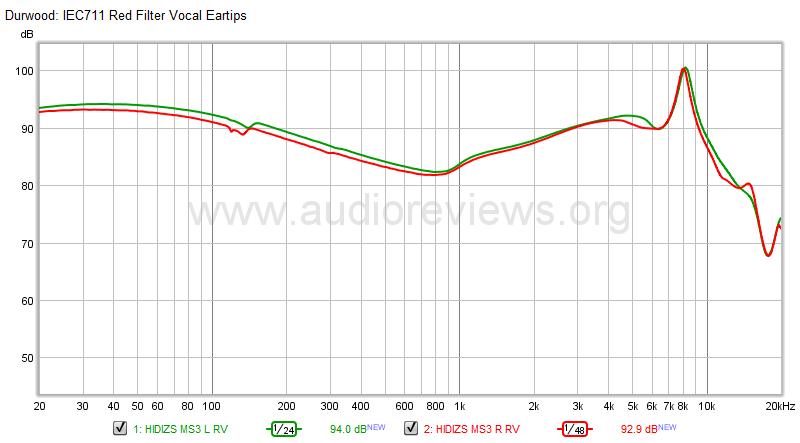
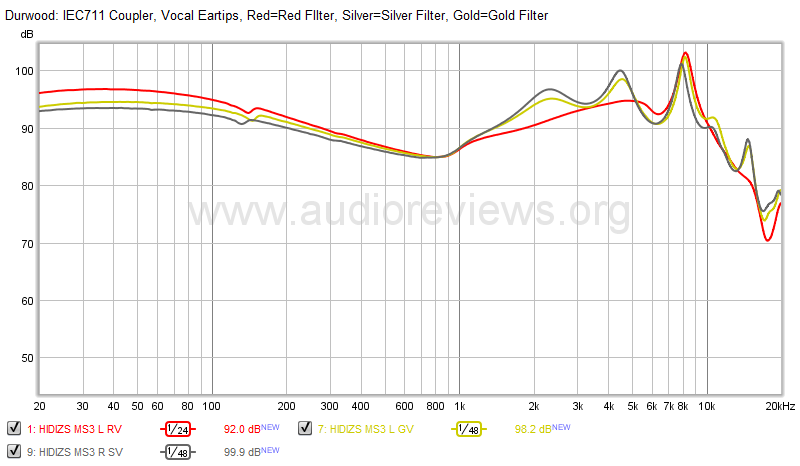
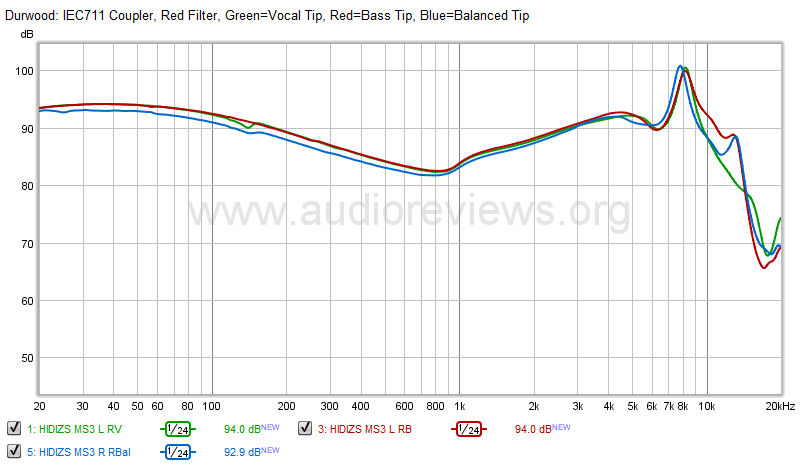
DISCLAIMER
Our generic standard disclaimer.



